This post may contain affiliate links. Please see our disclosure policy.
Plum lemonade concentrate is a bright, sweet-tart way to preserve summer’s plum harvest in a shelf-stable drink mix. It’s easy to make at home with fresh plum juice, bottled lemon juice, and sugar—just water-bath can it for later. Mix it with still or sparkling water for a refreshing homemade beverage any time of year.

If you’re swimming in plums and looking for a few creative plum canning recipes, this plum lemonade concentrate is an easy, crowd-pleasing option. It’s sweet, tart, and refreshingly different from the usual fruit syrups or jams. I like to mix it with seltzer for a quick homemade soda, but it’s also great diluted with still water or poured over ice with a splash of ginger ale.
This concentrate is a simple water bath canning recipe for shelf-stable storage, but you can also freeze it in small portions if you prefer. Either way, it’s a great way to make your plum harvest last into the colder months—when a bit of summer sunshine in a glass is very welcome.
Once you’ve already put up plenty of plum jam and plum jelly, and stocked your shelves with tangy pickled plums, or simple plums canned in syrup, there’s always more you can jar up this season!
Ingredients for Plum Lemonade Concentrate
This recipe makes about 4 pints (or 8 half-pints) of finished concentrate:
- 4 cups plum juice – from about 4 pounds of ripe plums, cooked and strained
- 2 cups lemon juice – fresh or bottled, for acidity and tartness
- 4 cups granulated sugar – helps preserve and sweeten the concentrate
This particular recipe is going to be acidic enough for canning whether you use fresh or bottled lemon juice. Every ingredient is well below a pH of 4.6, which is the safe pH for waterbath canning. Feel free to use fresh lemon juice for better flavor.
I’ve found that damson plums are a bit too tannic to be good in this recipe, save those for damson jam. And greengages and golden mirabelle plums are ok, but very mild and they hide behind the lemon flavor. Save those for a fruit forward greengage jam or golden plum jam.

How to Extract Plum Juice
To get started, you’ll need to extract juice from fresh plums. I used red plums, but any variety will work—just keep in mind that the color and flavor will vary depending on the type. Begin with about 4 pounds of ripe plums, washing them thoroughly and removing any stems. Cut the plums into chunks, but there’s no need to peel or pit them.
Place the chopped fruit in a stock pot with 1 cup of water. Cover the pot and bring it to a boil, then reduce the heat and simmer for 10 minutes. As the plums soften, mash them gently with a spoon or potato masher to help release the juice.
Once the fruit is fully broken down, strain the mixture through a jelly bag or a fine-mesh strainer lined with damp cheesecloth. Let it drain for at least an hour. If you want a clear juice, avoid pressing the pulp; if a bit of pulp is fine, press gently to extract more liquid. Measure out 4 cups of juice for the concentrate. Any leftover juice can be saved for jelly, syrup, or even popsicles.
Making the Concentrate
In a large saucepan, combine the 4 cups of plum juice, 2 cups lemon juice, and 4 cups of sugar. Stir to dissolve the sugar, and place the pot over medium-high heat. Use a kitchen thermometer to monitor the temperature—heat the mixture to 190°F, stirring occasionally to prevent sticking. Once it reaches temperature, remove from the heat.
This heating step helps dissolve the sugar completely and prepares the concentrate for safe canning. There’s no need to boil, so don’t walk away—it will come up to temperature quickly.
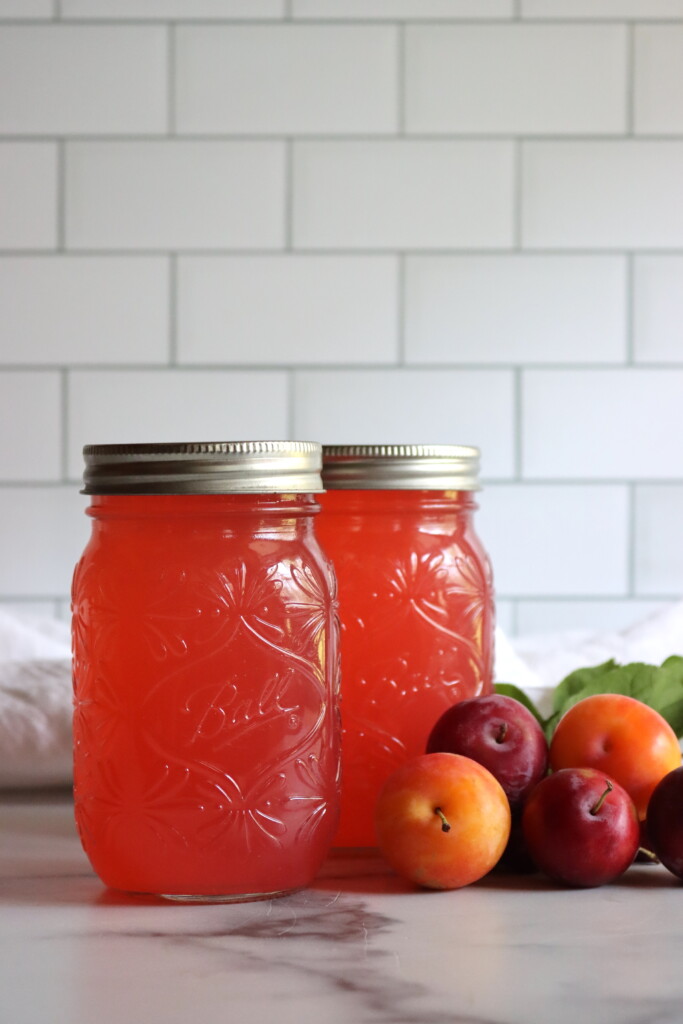
Canning Instructions
Prepare your jars, lids, and rings. You’ll need enough jars to hold about 4 pints total (or use half-pints for smaller servings).
Ladle the hot concentrate into jars, leaving 1/4-inch headspace. Wipe the rims with a damp cloth to remove any sticky residue, apply the lids, and screw on the rings until fingertip tight.
Process in a boiling water bath:
- 15 minutes at elevations up to 1,000 feet
- 20 minutes for 1,000 to 6,000 feet
- 25 minutes above 6,000 feet
This recipe follows the canning times for “fruit purees” as set out by the National Center for Home Food Preservation. Process times are the same for half pints, pints and quarts. Do not can in jars larger than quarts.
Since I’m using the canning times for fruit purees, you can, if you choose, blend pitted plums and include the pulp in this lemonade concentrate. You don’t necessarily have to completely filter the liquid through a jelly bag, though it does present nicer that way.
A tested recipe for strawberry lemonade concentrate is the inspiration for this recipe, and in that one, the strawberries are pureed and left in the mix.
Once processed, remove the jars and allow them to cool undisturbed for 12 to 24 hours. After cooling, check seals and label each jar with the name and date.
Lemonade Concentrate Canning Recipes
Beyond this simple plum lemonade concentrate, you can also make drink concentrates with lemon juice (or lime juice) and other fruits. Try making a bright purple blueberry lemonade concentrate, or a tangy cherry limeade concentrate.
Or for something really unique, whip up a batch of watermelon lemonade concentrate.
Of course, you can always keep it simple, and can plain lemonade concentrate or plain limeade concentrate if you just have citrus on hand.
Serving Suggestions
To serve, mix the concentrate 1:1 with water, seltzer, tonic, or ginger ale. I like mine a bit less strong, so I’ll often mix it 2:1 with more water than mix. Adjust to taste—some prefer a slightly more diluted mix, especially if using sweet varieties of plums. It also works well as a mixer for cocktails or as a sweetener for herbal iced teas.
Freezer Option
If you don’t want to can this concentrate, it freezes beautifully. Pour into freezer-safe containers in 1 to 2 cup portions, leaving headspace for expansion. Thaw before using and mix as usual.
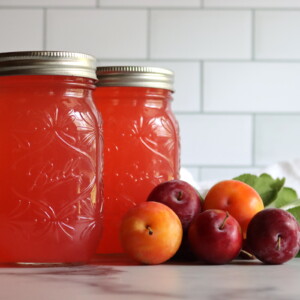
Plum Lemonade Concentrate
Ingredients
- 4 cups plum juice, from about 4 lbs ripe plums and 1 cup water
- 2 cups lemon juice, fresh or bottled
- 4 cups sugar
Instructions
Extracting Plum Juice
- To make 4 cups of plum juice, start with about 4 pounds of ripe plums. Wash the fruit, remove stems, and cut into chunks—no need to peel or pit. Place the plums in a stockpot with 1 cup of water.
- Cover and bring to a boil, then reduce heat and simmer for 10 minutes, mashing the fruit as it softens.
- Strain the mixture through a jelly bag or cheesecloth-lined strainer. Let it drain for at least 1 hour.
- For a clear juice, avoid pressing the pulp; for more yield with light pulp, press gently. Measure out 4 cups of juice for the recipe.
Making Plum Lemonade Concentrate
- Combine plum juice, bottled lemon juice, and sugar in a large saucepan. Stir to dissolve the sugar.
- Heat to 190°F, stirring occasionally. Do not boil.
- Remove from heat and ladle hot concentrate into prepared jars, leaving 1/4-inch headspace.
- Wipe rims, apply lids, and screw on rings until fingertip tight.
- Process in a boiling water bath for 15 minutes (adjusting for altitude).
- Remove jars and let cool undisturbed for 12–24 hours. Check seals and label.
Notes
Altitude Adjustments
Process half pints, pints and quarts in a water bath canner for 15 minutes (below 1,000 feet in elevation). Between 1,000 and 3,000 feet, increase the processing time to 20 minutes. Between 3,000 and 6,000 feet, the jars should be processed for 25 minutes. Process for 30 minutes above 6,000 feet in elevation. This recipe follows the canning times for “fruit purees” as set out by the National Center for Home Food Preservation. Their times for jar sizes for all three jar sizes are the same. Do not can this in half gallon jars, the largest size jar allowable is quart.Nutrition
Nutrition information is automatically calculated, so should only be used as an approximation.
Plum Canning Recipes
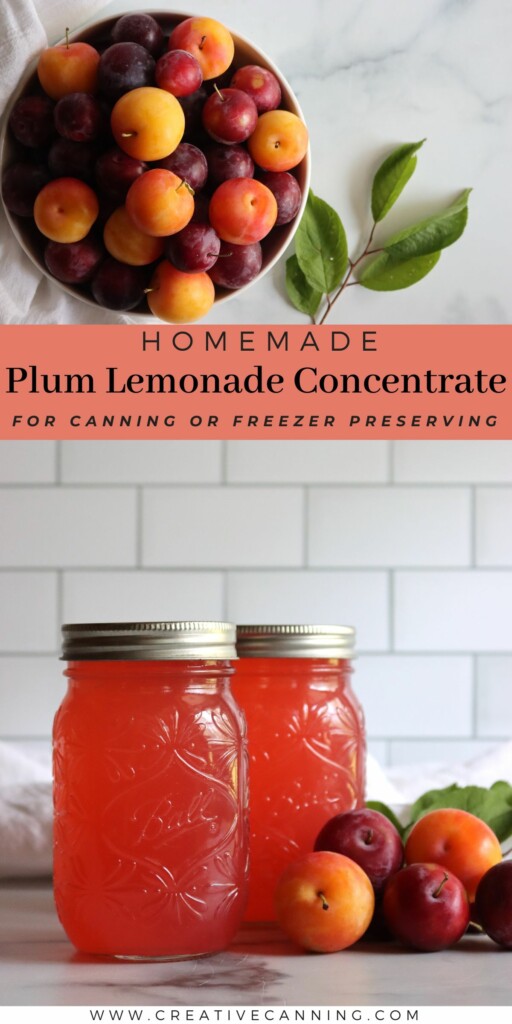
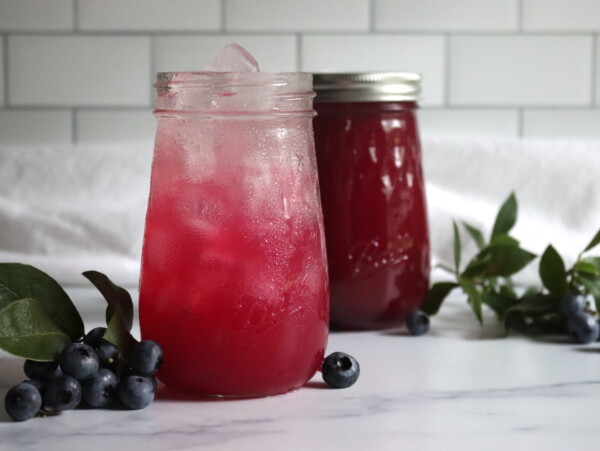
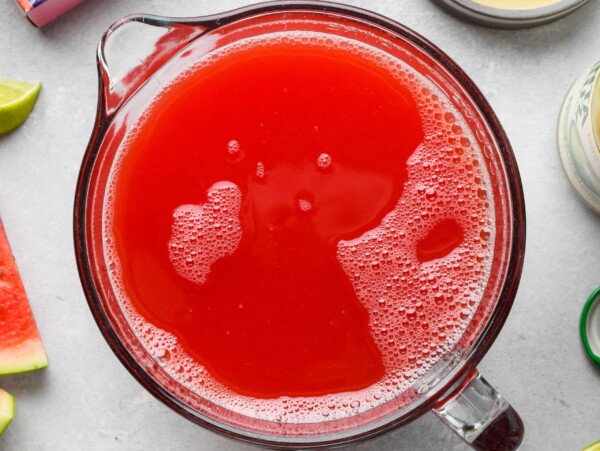


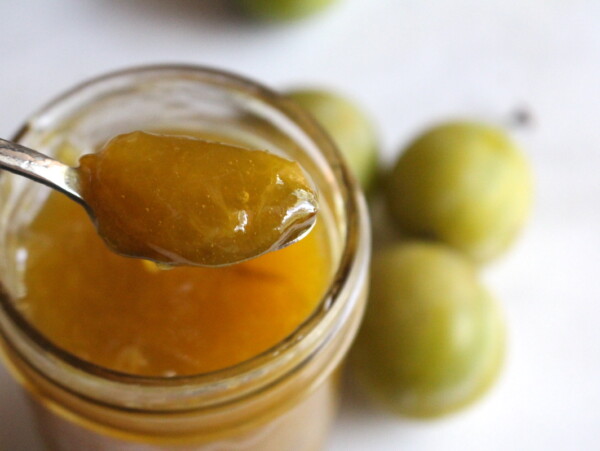
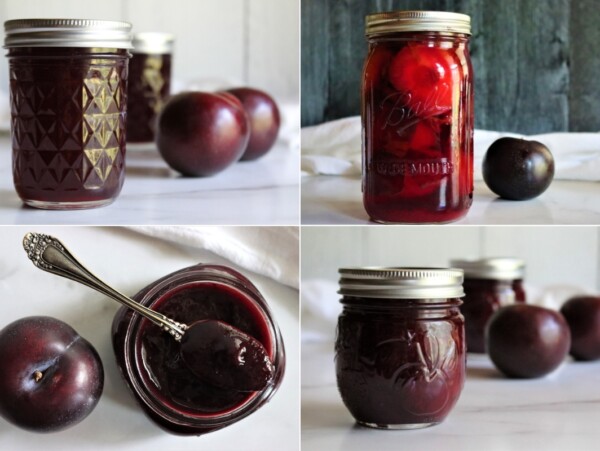
Plums work so well with lemonade, and they give it such a nice pink color too!